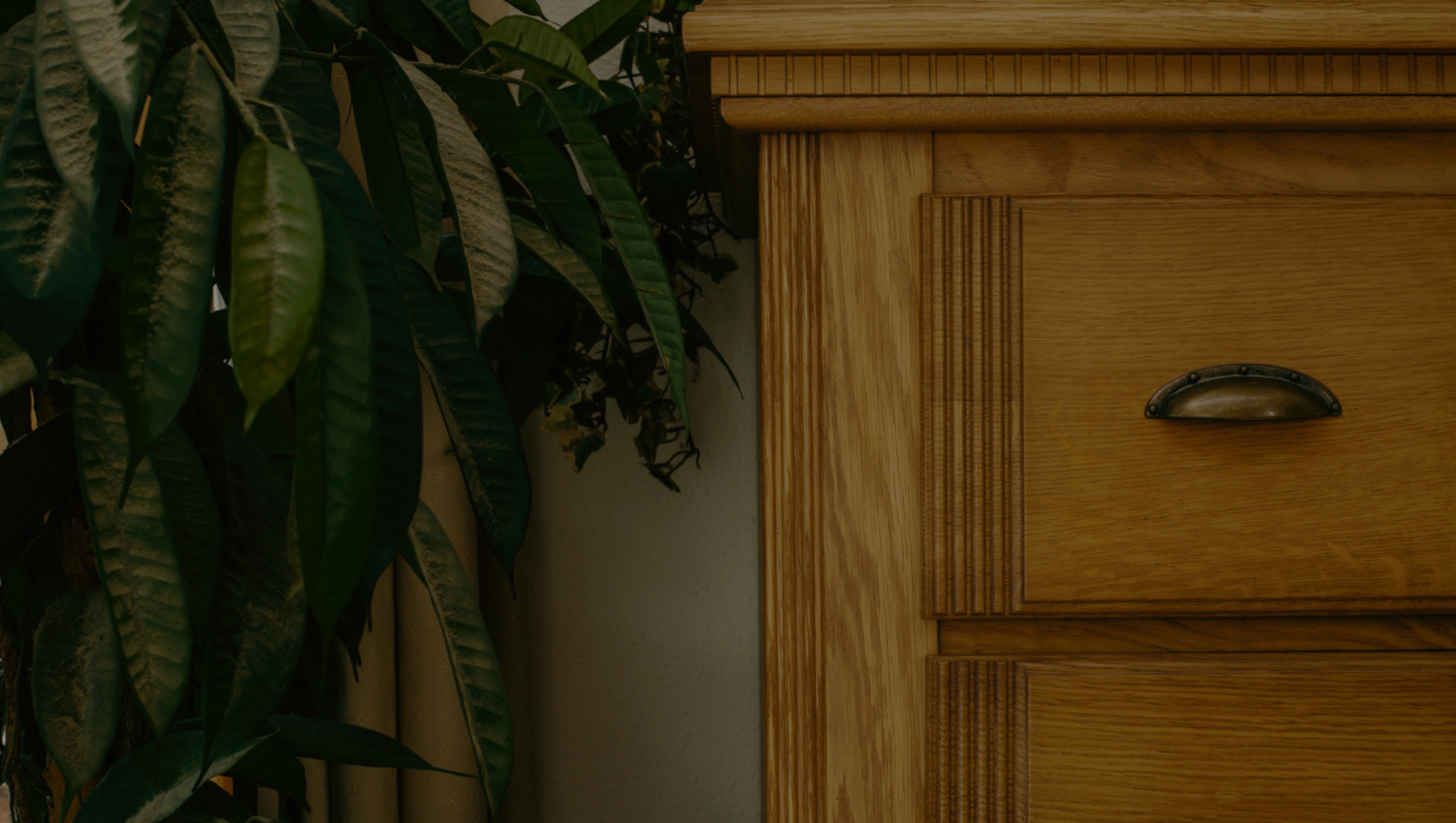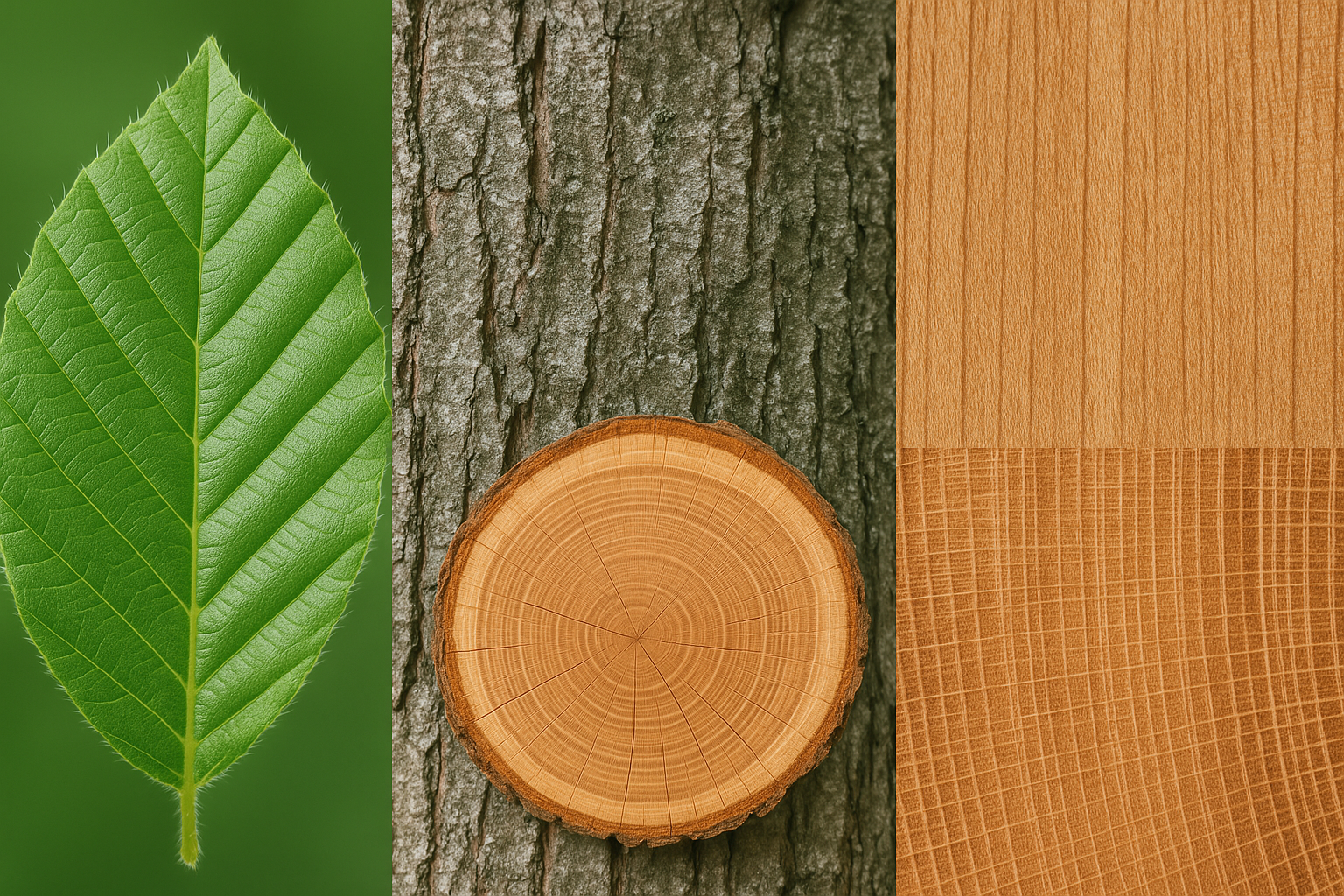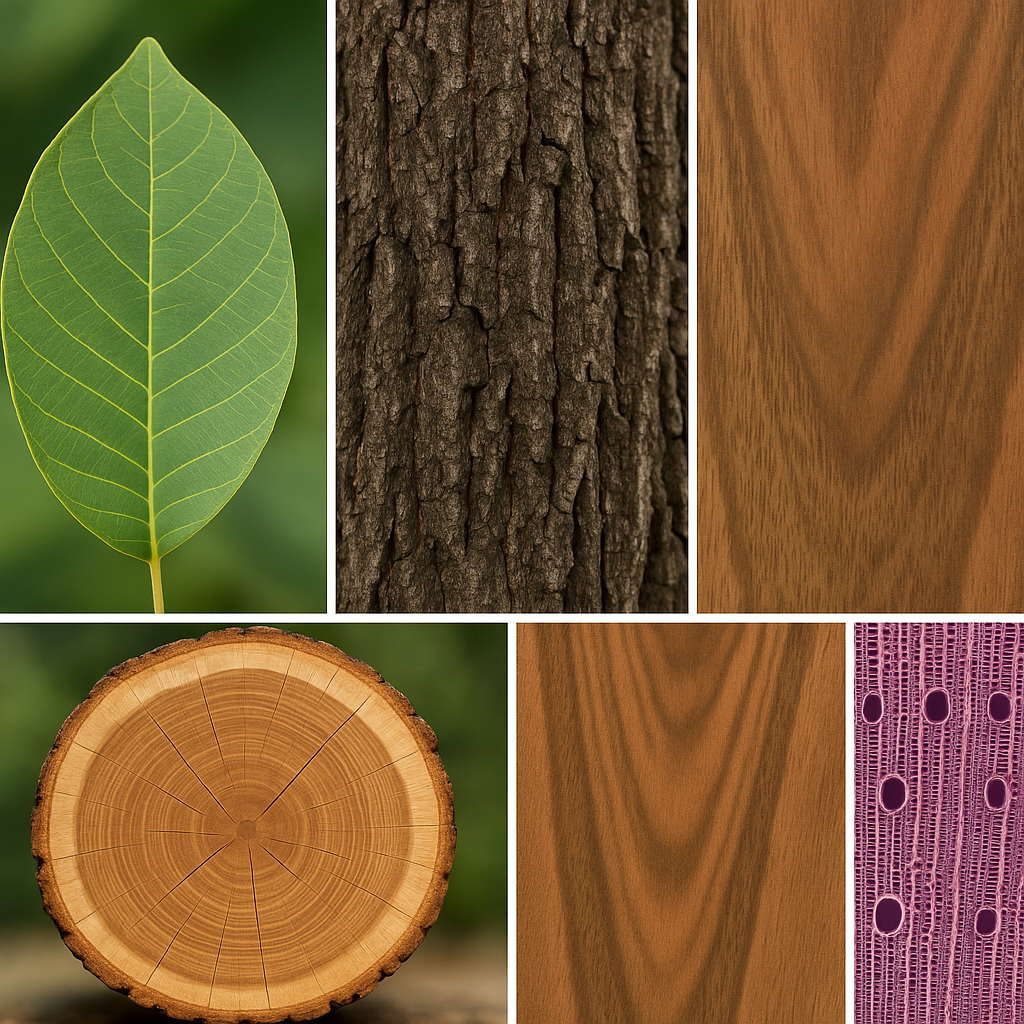

Beech Wood (Fagus Orientalis)
General Description:
Oriental Beech (Fagus orientalis) is one of the most widely used native hardwoods in Turkey, especially in the furniture, plywood, parquet, and interior wood applications. It is abundant in Turkish forests. The color is generally light cream, which may develop into pinkish or light brown tones over time.
Distribution:
-
Commonly found in the Black Sea, Marmara, Northern Aegean, and Northern Mediterranean regions
-
Beech forests make up about 15% of Turkey’s woodlands
Physical Properties:
-
Oven-dry Density: 650–730 kg/m³
-
Grain: Straight, occasionally slightly wavy
-
Texture: Fine and uniform
-
Color: Light cream with a tendency to turn slightly pink
-
Natural Luster: High, with a homogeneous appearance
Mechanical Properties:
-
Compressive Strength (parallel): 45–60 N/mm²
-
Bending Strength: 90–110 N/mm²
-
Hardness: High
-
Modulus of Elasticity: ~12.6 GPa
Advantages in Use:
-
Easily workable, provides excellent surface finish
-
Steam bends very well—ideal for chair production
-
Suitable for turning and detailed craftsmanship
-
Takes paint and varnish well
-
High performance and cost-effectiveness for furniture industry
Typical Uses:
-
Indoor furniture such as chairs, tables, cabinets
-
Solid wood flooring (parquet)
-
Plywood, laminated wood
-
Wooden toys
-
Handicrafts and decorative products
-
Packaging boxes
-
Occasionally used in musical instruments
Durability and Maintenance:
-
Requires impregnation or protective varnish for outdoor use
-
Ideal for indoor use; direct contact with water or soil may cause decay
-
Minimal distortion if moisture content is properly controlled
Ecological and Botanical Features:
-
Leaves are broad, oval, pointed at the tip, and serrated on the edges
-
Trunk is straight and light gray
-
Forms large, shady, broad-leaved forest communities
-
Has a significant role in natural forest ecosystems
Note: In Turkey, Oriental Beech (Fagus orientalis) is the primary species used in furniture production. It shares many physical and mechanical properties with the European Beech (Fagus sylvatica), which is also imported for industrial use.
Oak Wood (Common Oak) – Quercus spp
General Description:
Oak wood, mainly from native species such as Quercus petraea (Sessile Oak), Quercus robur (English Oak), and Quercus cerris (Turkey Oak), is widely used in Turkey for high-quality furniture, flooring, veneer, and interior design. Known for its durability, hardness, and distinctive grain patterns, oak is prized in both traditional and modern applications.
Distribution:
-
Found throughout Turkey, especially in Marmara, Black Sea, Aegean, and Central Anatolia regions
-
Oaks cover about 27% of Turkey’s total forest area
Physical Properties:
-
Oven-dry Density: 670–770 kg/m³ (depending on species)
-
Grain: Typically straight, but can be wavy; visible and decorative
-
Texture: Coarse, open-pored
-
Color: Light to medium brown, with possible yellow or reddish undertones
-
Natural Luster: Medium, with prominent medullary rays (“silver grain” effect in quarter sawn boards)
Mechanical Properties:
-
Compressive Strength: 45–65 N/mm²
-
Bending Strength: 90–110 N/mm²
-
Hardness: High
-
Modulus of Elasticity: ~11.5–13 GPa
Advantages in Use:
-
Excellent durability and strength
-
Resistant to wear, impacts, and deformation
-
Takes stain, oil, and varnish very well
-
Distinctive grain makes it highly decorative
-
Good dimensional stability
-
Suitable for both structural and decorative uses
Typical Uses:
-
High-end indoor and outdoor furniture
-
Parquet and solid wood flooring
-
Doors, windows, staircases
-
Decorative veneers
-
Barrels for aging wine and spirits
-
Boat building
-
Handicrafts and decorative panels
Durability and Maintenance:
-
Naturally resistant to decay and insect attack, especially heartwood
-
Suitable for outdoor use with proper finishing
-
Should be protected from excessive moisture changes to avoid warping or splitting
-
Periodic oiling or varnishing enhances durability and appearance
Ecological and Botanical Features:
-
Oak trees are large, long-lived, and form important parts of Turkish mixed forests
-
Leaves are typically lobed, acorns are produced annually
-
Bark is deeply furrowed and grayish-brown
-
Oaks play a key ecological role, supporting rich biodiversity
Note:
In Turkey, both native and imported oak species are used in the furniture and construction industries. Turkish oaks offer comparable performance and aesthetics to European oaks, with unique grain and color characteristics valued by designers and craftsmen.
Walnut Wood (Anatolian Walnut / English Walnut) – Juglans regia
General Description:
Walnut wood, primarily from the Juglans regia species (Anatolian Walnut, also known as English or Persian Walnut), is highly valued in Turkey for its rich color, elegant grain patterns, and excellent workability. It is commonly used in luxury furniture, veneer, interior decoration, and high-end joinery. Walnut is prized for its sophisticated appearance and natural durability.
Distribution:
-
Grows naturally throughout Turkey, especially in Central Anatolia, Marmara, and Aegean regions
-
Widely cultivated for both wood and nut production
Physical Properties:
-
Oven-dry Density: 600–680 kg/m³
-
Grain: Usually straight, sometimes wavy; attractive and decorative
-
Texture: Fine to medium, uniform
-
Color: Heartwood ranges from light brown to dark chocolate brown, sometimes with purplish or gray streaks; sapwood is pale yellow to nearly white
-
Natural Luster: Medium to high
Mechanical Properties:
-
Compressive Strength: 50–55 N/mm²
-
Bending Strength: 90–110 N/mm²
-
Hardness: Medium to high
-
Modulus of Elasticity: ~11–12 GPa
Advantages in Use:
-
Excellent workability by hand and machine
-
Finishes beautifully, polishes to a rich sheen
-
Good dimensional stability; resists warping and shrinking
-
Takes stains, oils, and varnishes well
-
Naturally durable; resistant to decay (especially heartwood)
-
Highly decorative, suitable for fine woodworking and turning
Typical Uses:
-
Luxury furniture (tables, chairs, cabinets)
-
Decorative veneers and panels
-
Interior joinery and wall cladding
-
Gunstocks
-
Musical instruments
-
Handicrafts and inlays
Durability and Maintenance:
-
Heartwood is naturally resistant to insects and fungi; sapwood is less durable
-
Suitable for indoor use and, with proper finishing, select outdoor applications
-
Periodic cleaning and oiling maintain its rich color and luster
Ecological and Botanical Features:
-
Large, deciduous tree with compound leaves
-
Produces edible walnuts (nuts)
-
Bark is gray-brown, smooth in young trees, becoming furrowed with age
-
Important in both natural forests and cultivated orchards in Turkey
Note:
In Turkey, Juglans regia (Anatolian Walnut) is the predominant species used in woodworking and furniture. Imported American Black Walnut (Juglans nigra) is also available, but Anatolian walnut is especially prized for its lighter color range and unique regional grain characteristics.





